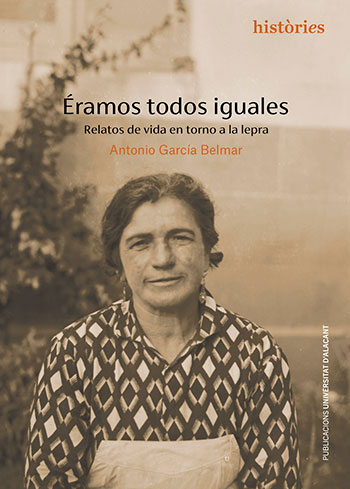Leprosy up close
By Antonio García Belmar (University of Alicante)
Leprosy is perceived as a disease that belongs to the past. It is largely so. However, how recent that past is may surprise you. Books and reports have been written, documentaries and films have been made about this disease, its treatments, and its sanatoriums. But we know very little about the actual people who faced a disease that began by affecting their bodies and ended up taking over their whole lives; we understand little about what it was like to confront the fear and social rejection of one of the most stigmatized and stigmatizing diseases ever known. We only know what the statistics tell us about them and what those who spoke on their behalf have told, overriding the voice of the protagonists themselves. We just had to ask them; we may think. Indeed, but we also had to accept their answers. Most of these answers had already been lost forever when this project began, but there was still an opportunity to collect and preserve this essential part of Fontilles' historical heritage and the history of leprosy in Spain: the testimonies of those who faced this disease.
Since June 2016, interviews have been conducted with people who still reside in the Fontilles Sanatorium and who agreed to share their stories. A total of eighteen life stories, accounting for nearly sixty hours of recordings were transcribed in a several-hundred-page-document that was then analysed, organised thematically and prepared to be published in book form. The transcriptions allow us to learn about the origin of these people and, thus, indirectly, of that of the disease itself, as it was closely linked to the living conditions of these peoples' childhood and youth. We also learn about how their lives changed when they received the diagnosis; about their stay in the sanatoriums of Trillo and Fontilles; their perception of the disease and treatments they received; the networks of solidarity, mutual aid and the unity they experienced that allowed them to endure seclusion, isolation and separation from their families; or their decision, when the disease was definitely cured, to leave and to accept the challenge of facing life, work, love, friendship or starting a family while keeping a secret, whose disclosing could end it all. Others decided not to leave and to remain within the walls of the sanatorium for the rest of their lives. The life stories collected also tell us about the dreams, pleasures, preferences or convictions that they hung onto to keep going; the strategies they adopted to face the fear they provoked in others and how they reasoned such fears; their decision to return to Fontilles at the end of their lives or to talk and recount, with hindsight, what they went through.

All these testimonies have been brought together in the book Éramos todos iguales. Relatos de vida en torno a la lepra, published by the University of Alicante. It is not a book about leprosy, although everything in it revolves around this disease. The life stories gathered there tell us about the recent experience of people who faced an illness associated with the past and the individual and collective strategies with which they managed to recover their stolen identity and defend their personal dignity. They are stories anchored in a time and place, but they transport us to timeless and universal territories of the human condition. They are stories of union, love and resistance of people who managed to feel equal again in a world that marked them as different. This collection of life stories about leprosy is not intended to give a voice to the voiceless. It only aims to deactivate for a moment the mechanisms that have historically served to silence them.
Nonetheless, by reading these transcriptions, we inevitably miss the sound of their words, intonations, or their accents... their lilt. We fail to capture what they really leave behind, their emotions, their laughter - sometimes their tears. The audio library of the Fontilles and leprosy in Spain website seeks to fill this gap by publishing a selection of short voice recordings. They are still under construction.
The project is ongoing, and we intend to increase the number of testimonies collected over the next few years, reaching people who were once affected by leprosy and who currently live outside the Fontilles Sanatorium. Also, that of the people who dedicated their lives to the treatment and care of those who were admitted to sanatoriums. All these testimonies will make up a leprosy oral history archive that, together with the rest of the documents from the Fontilles archive, will be preserved in the Archivo de la Diputación de Alicante, where they will be accessible to everybody.